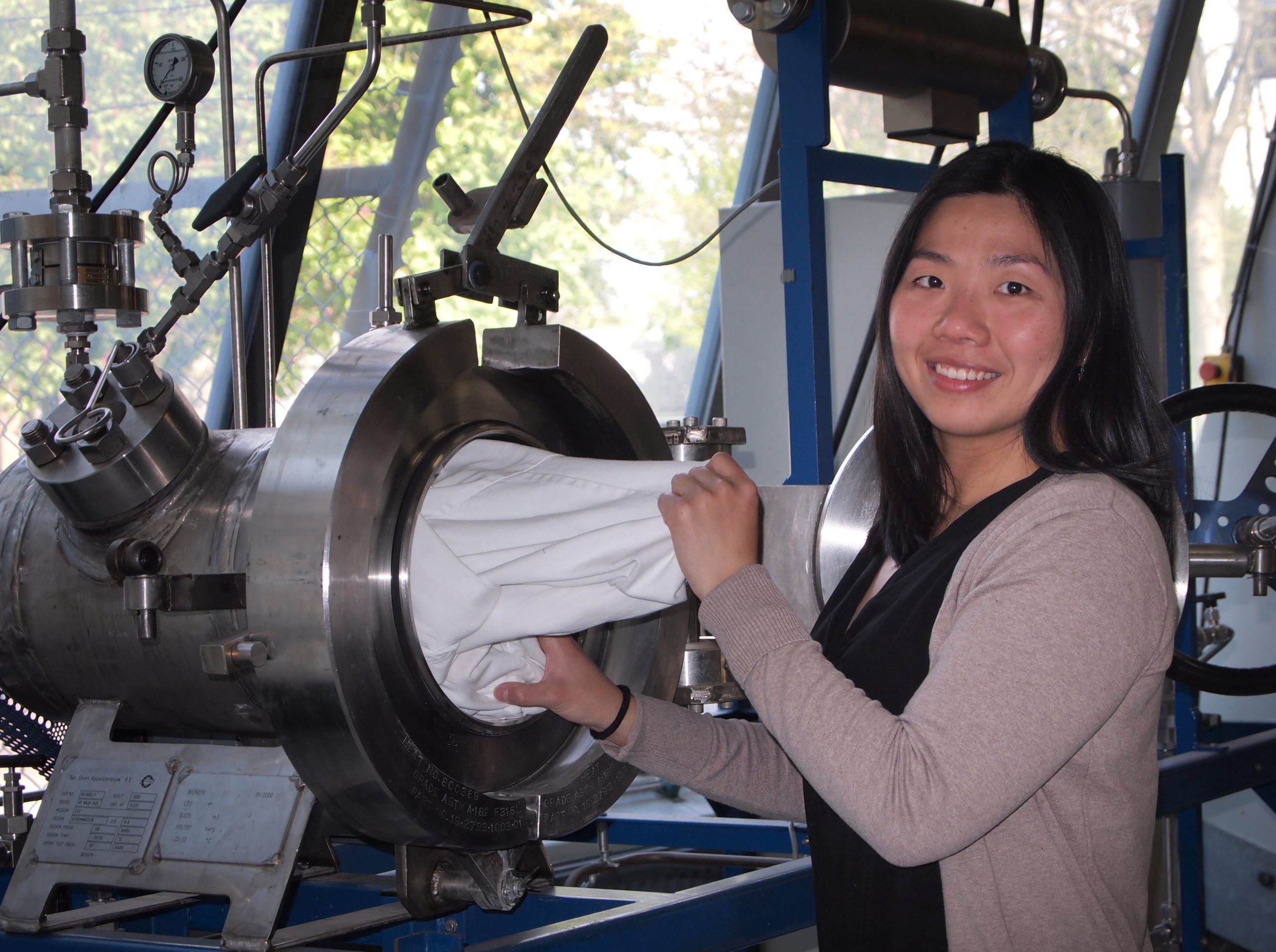Dry-cleaning with CO2 is a sustainable competitor of the traditional PER cleaning. In her PhD research Stevia Sutanto combines technical improvements with competitive economics.
Fabrics that wrinkle or shrink in water may be taken to a professional dry cleaner. The industrial washing machines there usually work with a solvent called perchloroethylene or PER. It works pretty well, but it has some serious health drawbacks and PER is even classified to be probable carcinogenic.
That’s why alternative solvents are being developed and considered. Liquid carbon dioxide (CO2) could be such an alternative: it is non-toxic, non-flammable, non-corrosive, environmental friendly, cheap, easily recovered, available on a large scale and needs no drying.
Nor does it wash very well. Bummer.
In her PhD thesis Dr. Stevia Sutanto, now working as a post-doc at Twente University, explains that liquid CO2 doesn’t remove particulate stains from textile very well because of its low density (0.8 kg/litre at working conditions 45 bar and 10 degrees Celsius) and low viscosity, which means it has little interaction with fibers. PER’s density is 1.3 kg/L and its viscosity is a magnitude higher.
To make matters worse, once dirt has been removed from the fabric, there is a large chance it will be reattached somewhere else. Dirt gets distributed rather than removed, which results in a greying instead of cleaning of your clothes. If ever CO2 wants to make a chance against currently used PER, stain removal should be improved, says Sutanto, and the ‘redeposition’ prevented.
At the end of her thesis Sutanto presents a number of improvements of one of the few commercial CO2 washing machines: Electrolux Wascator.
She aims to intensify the interaction between liquid CO2 and textile by spraying the solvent through rows of nozzles in the washing drum. Ridges and laundry balls are added to create more textile movement.
More costly adaptations include a CO2 circulation system (€20.000) and a temperature controller (€7,000). The four-fold filter comes relatively cheap at €1,000.
At €120,000, a Wascator is two times more expensive than PER machine. High-pressure operation explains most of the price difference.
The improvements following to Sutanto’s recipe add 28,000 another euro to the bill making a grand total of nearly €150,000 for a top-notch CO2 washing machine.
That seems like a death sentence for the new technology. Sutanto however does the sums and arrives at roughly equal prices for PER or CO2-dry cleaning per kg of fabrics.
The trick is that three quarters of the price you pay at the dry cleaners is for pre- and post treatment of your laundry. Only a quarter goes into the cleaning technology. CO2 comes out slightly cheaper in the end because it eliminates the disposal charges and needs no water or steam.
→ Stevia Sutanto, Textile dry cleaning using carbon dioxide: process, apparatus and mechanical action, 7 April 2014, PhD supervisor Prof. Geert-Jan Witkamp (AS) and Prof. M. Cohen Stuart (Wageningen).



Comments are closed.